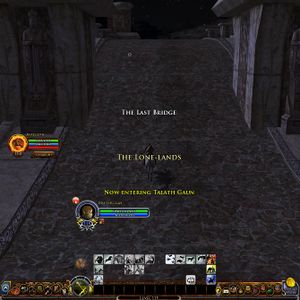Help:Locations
Jump to navigation
Jump to search
Location also known as Archival Geography, refers to all places within Middle-earth that have borders and maps including Lands, Regions, Areas, Settlements, and other places inhabited and governed by all Races within this realm.
What are Locations
Locations are separated into different categories:

- Locations viewed on the first layer of the Middle-earth map -- (all Lands)
- Currently there are five lands: Eriador, Rhovanion, Rohan, Gondor, and Mordor
- Locations viewed on the second layer of the Middle-earth map; found on the land maps -- (all Regions)
- Pop-up Text: Large sized, beige text
- Examples: Angmar, Bree-land, Dunland, East Rohan, Central Gondor
- Locations viewed on the third or fourth layer of the Middle-earth map; found on the region maps if without their own map -- (all Areas)
- Pop-up Text: Medium sized, yellow text
- Examples: Fords of Isen, Agarnaith, Sutcrofts
- Locations viewed on either the third or fourth layer of the Middle-earth map; found on a region or area map (these are named places that may or may not have their own map) -- (all Settlements)
- Pop-up Text: Large settlements depict Medium sized, yellow text (some large settlements show both yellow text name and white text name)
- Pop-up Text: Small settlements depict Small sized, white text
- Examples: Rivendell, Isengard, Edoras, Minas Tirith
- Locations viewed on the Middle-earth map that represent buildings, structures, city sections, and other noteworthy locations that are of outstanding, historical, aesthetic, or cultural importance.
- POIs (red flag) are Landmarks, but some Landmarks do not show flag.
- Pop-up Text: Small sized, white text
- Examples: Market Square, Lady's Rest, Brandywine Bridge, Bones of Smaug
- Special PvMP locations viewed on the Middle-earth map that represent locations that are controlled by one side and contested by another represented by one of two icons.
- Keep: Must be flipped by the opposing faction (Freeps vs. Creeps)
- Outpost: Can be flipped by either the opposing faction or by The Delving of Frór NPCs.
- Locations that require a character to step into an instance, whether they step through a door into a building or through a cave entrance into a network of tunnels or crypts - (all Interiors)
- Examples: The Forsaken Inn, Lalia's Market, Caves of the Avorrim, Lake-town Trading Hall
- Locations that are separate from the world, sometimes duplicate copies of places, which are used for Quest Instances, Skirmishes, Public Dungeons and World Instances - - (see all Instances)
- Examples: Goblin-town, Defence of Minas Tirith, The Siege of Gondamon, The Rift of Nûrz Ghâshu (Raid)
Naming Locations
Naming has always been a topic of contention, here on Lotro-Wiki we strive to be consistent (which does not always follow the game) and we do our best to keep things easy to find and organized.
Naming convention guidelines are as follows:
- Map name - if a location has a map use the name on that map.
- Mini-map - if a location does not have a map use the name shown under the mini-map
- Pop up text - when in doubt check the name text size and colour when entering the location
- Large, beige text = Region
- Large, beige text = Sub-region
- Medium yellow text = Area or Settlement
- Small white text = Landmark
- Note: when labeling settlements use the description in the settlement section based on if it shows area or landmark text, or both.